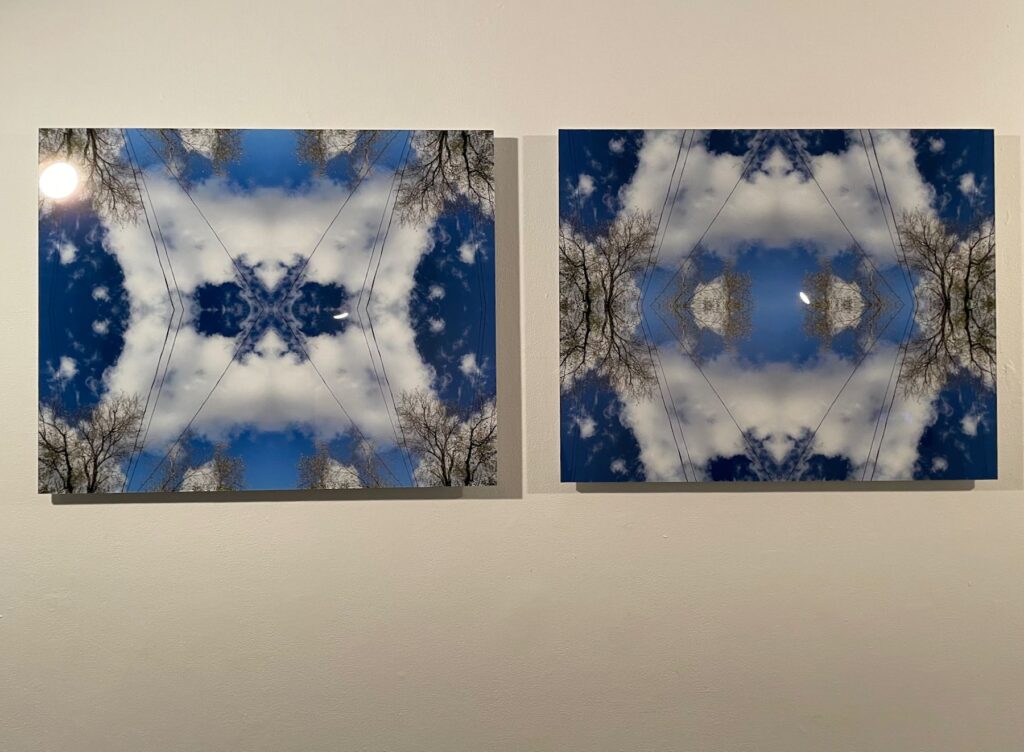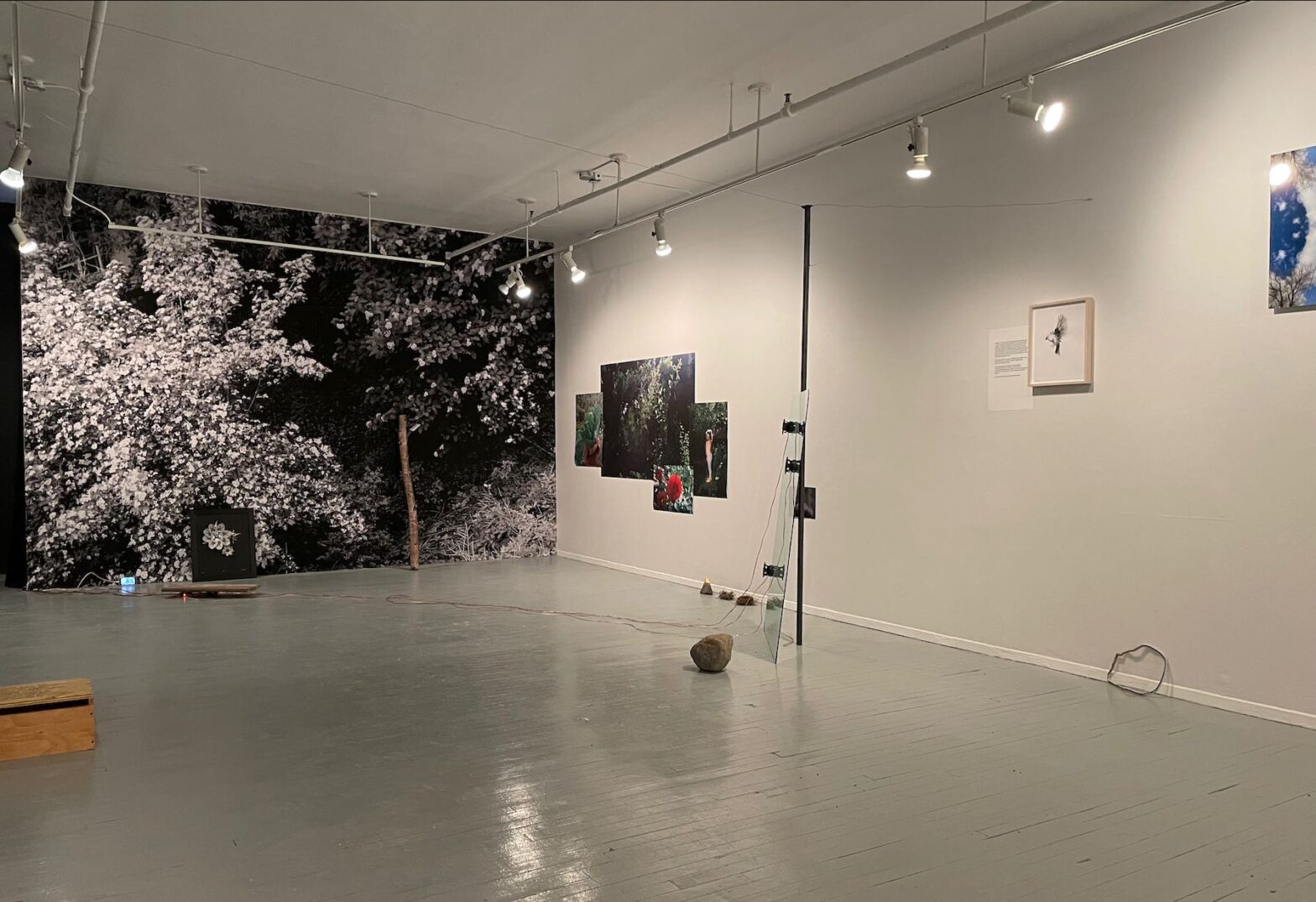A review of the exhibition Ciels racines, presented at Arprim, center d’essai en art imprimé, Montreal, from January 21 to February 26, 2022.
Artists : Anne-Marie Proulx, with Catherine Arsenault, Jacynthe Carrier, Hannah Claus, Marie-Michelle Deschamps, Caroline Gagné, Andréanne Godin, Maryse Goudreau, Natalie Jean, Dominique Pétrin, Manon Sioui, Leila Zelli, and the participation of Céline Béland

In the context of this presentation, Anne-Marie Proulx turns to the community of colleagues that she missed so much during the confinement caused by the pandemic. Around her artist’s book, Le jardin d’après, inspired by Anne Hébert’s novel Le Premier Jardin (2000), she invites twelve women – close friends, mothers and colleagues with whom she shares a sensibility – to dialogue on the theme of the garden. From their respective practices, each adopts a posture of openness to the others, giving full scope to listening, as well as to the chance and aesthetic potentialities provoked by the meeting of their plastic proposals. This interest in dialogue and community spirit has marked Proulx’s practice for many years. She is inspired by it as an ethical ideal. She interprets the act of bringing artists together as an act of creation, rather than as an artist-curator.

As in some of her previous installations, Proulx specifically considers the site of presentation and situates the Arprim space in relation to the four cardinal directions. One enters from the southeast, where the gallery walls remain white, while in the opposite section the walls have been painted black, emphasizing the alternation of day and night, a phenomenon evident everywhere on earth, according to different rhythms. Her gesture of geolocation is thus part of a knowledge of the world and a certain cosmogony to which Céline Béland, her mother and astrologer, responds by presenting the astral chart of the Sun and Moon of each of the guests. A photographic mural by Proulx, taken from the book Le jardin d’après, lines the back wall of the gallery, and another from the same source, printed on fabric, forms a curtain on which Manon Sioui’s cut paper flowers are fixed. Near the entrance, a stack of copies of her artist’s book opens and closes the exhibition. Her recognizable plastic proposal frames the entire presentation and punctuates it with pages torn from her book and hung on the walls.

Like their hostess, the guest artists, author and astrologer bring forward personal narratives around the garden – or their intimate relationship to plants, in their own terms of reference, often adapted from their respective practices. For example, although best known for her use of the beluga whale, Maryse Goudreau’s contribution is based on a video and photographs taken in an orchard located on her land in the Gaspé Peninsula. Hannah Claus, a city dweller, turns her camera towards the sky marked by electrical wires or clotheslines, visible behind her home, which she recomposes to form patterns akin to Aboriginal beadwork. In a video, Leila Zelli shows us an Iranian child exposed to war adopting the position of a tree to deal with her fears. On a yellow birch branch, which she has installed against the back wall, Andréanne Godin inserts a small gouache from a series made as an offering to her accomplices in the project. Host to the medicinal chaga mushroom, this tree from Quebec’s southern forest has been the province’s signature species since 1993. A white birch, a species of the same family, remains the only living tree on the grounds of the house where Godin grew up. Based on singular personal experiences, often emotionally charged, the partners paint a portrait of a nature of great mnemonic and symbolic richness, as much for each of them as for us, together and individually.



In this respect, the installation of Proulx and her companions reweaves the complex links between nature and culture that a prevalent Western way of thinking has long separated. All different, intimate and personal, their experiences put together erect the living as a shared continent, as described by Dominique Truco in her collection Le vivant unique continent, in her free verse: “Continent Terre / Terres continues / Au monde réaccordé”. Following the example of this poet, the exhibition Ciels racines calls for our collective responsibility with regard to the living that we inhabit and which unites us and invites us to resist « chefs d’États et de gouvernements / tous à Bouthaniser / atteints d’intellectuelles comorbidités d’économie de marché / préfèrent / Argent au Vivant ».


